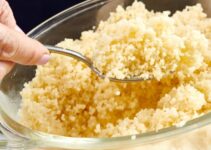Jatamansi description
Jatamansi is a natural brain nervine tonic and memory enhancer with calming memory enhancer, peacefulness, and relaxation features. It is an endangered Ayurvedic medical herb used since ancient times for medicinal purposes. It is available as a root, oil, and powder in the market. Nardostachys Jatamansi is a known calming herb in Ayurveda and Unani because of its medicinal value. Several studies have been done for its efficacy concerning the nervous system. In Ayurveda, it is prescribed against stress, spasms, epilepsy, convulsions, and hysteria. It is one of the excellent herbs to treat epilepsy. Different names like Jatamansi, spikenard, nard, Nardin, muskroot, balchar, sumbul-ut-teeb, and sambul were later known as relaxing herbs. Jatamansi consists of two words: Jata means dreadlocks, and manasi indicates towards humans. It comes under the family of Valerianaceae. It has been found in the Himalayan region.
Amazing benefits of Jatamansi
- Hair growth: The extract of jatamansi oil is helpful in the development of hair. It is beneficial for smooth, silky, and healthy hair, too. It improves complexion and ensures glowing and shining looks to the body. When applied, the root of the powder in the water promotes skin texture.
- AYUSH-56: It is an amalgam of Nardostachys jatamansi and Marsilea minuta with a ratio of 1:2. It is used as an anti-epileptic.
- Cardiac health: It ensures good cardiac conditions are observed in mice.
- Memory and learning: The medicinal plant helps enhance the brain’s faculties and combats mental problems, thus imparting calm and peace to the mind. It is one of the practical medicinal roots to subsidise the three humors-Vatta, Pitta and Kapha and provides a delightful state to the doshas of the body.
- Strengthens the nervous system: It helps to provide vitality, vigour, and strength to the body, thus suitable for the nervous system.
- Stress buster: The plant can reduce stress, anxiety, and tension by balancing biochemical reactions in the body. It is good to have the mind calm and healthy, and it acts as one of the finest mind rejuvenator tonics. It facilitates sound sleeping, thus suitable for those with a stressful life.
- Skin infection: The burning sensation of skin and inflammation get subsidised when the decoction of Jatamansi powder prepared in cold water is applied.
- Liver problems: it shows hepatoprotective effects along with Momordica charantia and Ferula asafetida.
- Antidepressant: The extract of N. jatamansi shows anti-depressant features
- Antifungal: The essential oil of it acts against fungi like Aspergillus flavus and Aspergillus niger.
Best uses of Jatamansi
- It is used to impart a black colour to hair and prevent greying of hair. Its medicated oil with almonds is beneficial for smooth and silky hair.
- It benefits hyperactive children and helps reduce hyperactivity, restlessness, and aggressiveness.
- It is therapeutically essential, alleviates pain and swelling, and shows properties like carminative and aromatic.
- It has hepatoprotective characteristics, thus valuable for hepatitis, preventing liver enlargement and jaundice.
- The oil helps relax and calm the body and mind, ensuring relief from headaches and migraines.
- Its underground stem is used to prepare powerful aromatic essential oil.
- The plant’s root is used in making oil to treat insomnia and birth-related problems.
- It is used as analgesic and diuretic in Unani.
- Used for making perfumes and dies.
- The root of the powder is used to treat intestinal worms.
Side effects of Jatamansi
- People suffering from hypersensitivity should avoid the use of it.
- Consuming an excess of jatamansi leads to vomiting, diarrhoea, and abdominal pain.
- It may also cause urinary problems if it is taken in excess.
- Nausea and colic are also common if heavy doses are given.
- Pregnant as well as lactating mothers should avoid it.
Chemical composition of Jatamansi
The different biochemical substances that are found in this medicinal plant are ursolic acid, acacin, kanshone A, octacosanol, nardosinone, nardosinonediol, aristolen-9beta-ol, oleanolic acid, beta-sitosterol. It also contains nardal, jatamansic acid, jatamol A &B, spirojatamol, terpenoid, neolignans, taraxerone, valeranone, chlorogenic acid, ferulic acid, syringic acid, and protocatechuic acid.
Ayurvedic features
The different ayurvedic characteristics of the plant are given below:
- Taste (Rasa): bitter, astringent and sweet
- Characteristics (Guna): light
- Potency (Virya): Cool & calm
- Digestive effect (Vipaka): pungent
- Humor (Effects on Tridoshas): cool all three doshas: Vata, Pitta, and Kapha





I am writing a proposal regarding chemical evaluation of jatamansi and need thorough study on these topics. These matters help me for proposal writing but i need more..
Chemical analysis can be done in chemistry lab.This u will find at Bombay ,Bhavan’s college Andheri. This will help u to understand the mode of action of drug.
Thanks.
Do they hv facility for medicinal plants
Very nice information
Very good information in the article